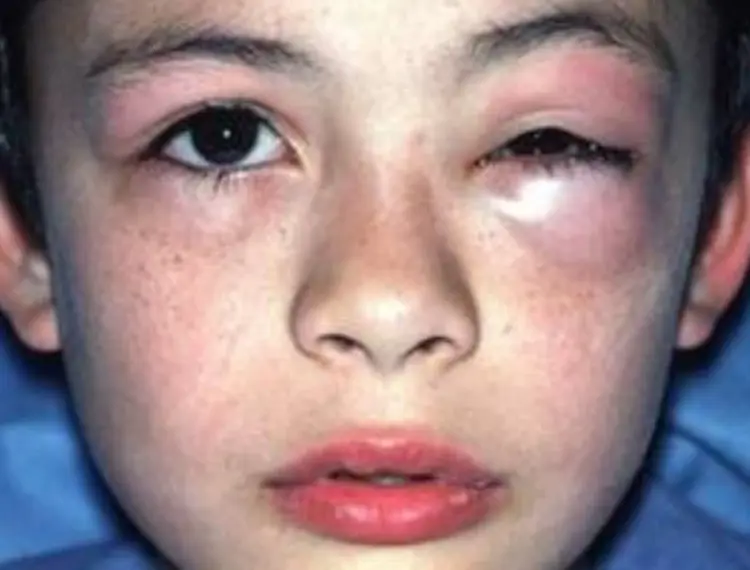
Medical Media Kits have given Allergy & Anaphylaxis Australia permission to use this photograph.
What is anaphylaxis?
Anaphylaxis is a severe allergic reaction that may cause death. It should always be treated as a medical emergency. Adrenaline (also called epinephrine) is the first treatment choice for anaphylaxis. The adrenaline is given as an injection. In Australia, there are two brands of adrenaline injectors available - EpiPen® and Anapen®. The two adrenaline injectors work in different ways so people need to know which device they have and how to use it.
What causes anaphylaxis?
Anaphylaxis can happen after someone is in contact with something they are allergic to. This is called a trigger. Triggers are usually foods put in the mouth/eaten, insect stings or bites, medicines, or latex rubber.
Anaphylaxis can happen anywhere. This includes at the dental clinic or at home when caring for your teeth.
Some dental products used for treatments contain food. The most common food found in dental products is milk. Recently, a person who was allergic to milk died from anaphylaxis. They were given a dental product that included cow’s milk protein. Allergy & Anaphylaxis Australia has also had several reports of people having anaphylaxis at the dentist. The anaphylaxis occurred even when the patient had told the dental staff about their allergy at the time of the treatment. It is important that the person with the allergy/the parent of the child with the allergy and the dentist and their team know:
- the signs and symptoms of an allergic reaction; and
- the emergency treatment steps in case of accidentally being exposed to an allergen.
Milk products at the dentist
Products that include milk are being used more often in oral healthcare. These products are used to:
- help stop tooth decay;
- protect teeth from tooth decay; or
- provide extra protection for teeth that are at risk of developing tooth decay.
This can include toothpastes, and dental varnishes. Many of these products will say on the label that they include an ingredient called Recaldent™. This is a mix of casein phosphopeptide – amorphous calcium phosphate (CPP-ACP) which is a milk product. Any product that includes Recaldent™, CPP or CPP-ACP is NOT to be used by anyone with a milk allergy.
Products that include milk
Below is a list of dental products that include milk as part of the ingredients. This list does not include all dental products that contain milk. The ingredients of EVERY dental product should be checked EVERY time they are given to someone with a known allergy.
- Chewing gum e.g., Recaldent™ gum
- GC Tooth Mousse®. This can be bought from the dentist’s clinic, supermarkets, pharmacies or online.
- Toothpaste e.g., MI Paste®, MI Paste Plus® and MI Paste ONE
- MI Varnish. This is a type of fluoride treatment used in dental care.
- Fuji VII EP. This is a dental filling material used to fix teeth.
GC Tooth Mousse® also includes a warning that it should not be used on people with a soy allergy.
What if I am lactose intolerant?
Lactose intolerance is not the same as a milk (dairy) allergy.
The sugar in milk is called lactose. When we have milk, the body breaks down this sugar using an enzyme called lactase. People with lactose intolerance do not have enough of the enzyme lactase. This means that their body cannot break down the sugar.
Lactose intolerant people can often have a small amount of milk, especially those in dental treatments. Lactose intolerance does not cause anaphylaxis. The immune system of people with a milk allergy responds to protein/s in milk. For these people, even very small amounts of milk protein can be severe enough to cause anaphylaxis. Do not ever give a dental product that includes milk to someone with a milk allergy.
How to prevent anaphylaxis when using dental products
The role of the patient
- If you have an allergy to food, medication or latex, you should talk to your dentist before your appointment to check if any products will be used that may cause you to have an allergic reaction. Contacting your dentist early gives them time to order a different product.
- At your appointment, tell your dentist again about any allergies you have. Your dentist should again check the ingredients of the products they will use for your treatment.
- Always take your EpiPen® or Anapen® and your ASCIA Action Plan for Anaphylaxis to all of your dental appointments. This plan explains when and how to use the adrenaline injector. It also explains other first aid care for anaphylaxis such as the need to stay lying flat or seated with legs stretched out straight if it is difficult to breathe. The person must not stand, walk, or sit on a chair with their legs dangling as these positions can cause blood pressure to drop very quickly.
- Check the labels of all dental products used at home. Foods may not be easy to find on labels. For example, milk may be listed by lots of different names. These names can include milk, casein, Casein-Phosphopeptide (CPP), Recaldent™, or CPP-ACP.
Signs and symptoms of anaphylaxis
A two minute video that explains the signs and symptoms of an allergic reaction can be seen here.
It is important to know the signs and symptoms of anaphylaxis.
Anaphylaxis can cause death. The signs and symptoms can include any one of the following:
- Difficult or noisy breathing
- Swelling of the tongue
- Swelling or a tight feeling in the throat
- Having trouble speaking or a croaky voice
- Wheezing or coughing that will not stop
- A dizzy feeling that does not go away or fainting
- Young children can go pale and floppy
In many cases, but not all cases, a person that is having anaphylaxis can have signs and symptoms of a less serious allergic reaction first. Sometimes these signs and symptoms are hard to see. They can include:
- Swelling of face, lips and/or eyes
- Red, itchy bumps on the skin called hives or welts
- Stomach pain and vomiting - these are signs of anaphylaxis for an allergy to insects

An example of a swollen lip due to an allergy.
This image is used with the permission from Allergy & Anaphylaxis Australia
Treatment of anaphylaxis

An example of an EpiPen® (left) and Anapen® (right)
Image supplied by Allergy and Anaphylaxis Australia
Remember to keep your ASCIA Action Plan for Anaphylaxis with your EpiPen® or Anapen®. This plan reminds you how to use your EpiPen® or Anapen® and when to use it. The red and blue ASCIA Action Plan for Anaphylaxis is for people who have an EpiPen®. The black and red ASCIA Action Plan for Anaphylaxis is for people who have an Anapen®.
See below.
ASCIA Action Plan for Anaphylaxis for people who have an EpiPen®.

ASCIA Action Plan for Anaphylaxis for people who have an Anapen®.

Follow instructions on the ASCIA Action Plan or First Aid Plan for Anaphylaxis if you are having an allergic reaction.

More information
Helpful videos
Helpful links
Contact form for Allergy & Anaphylaxis Australia (A&AA)
Phone: 1300 728 000
Example cases of allergic reactions to dental products
Download the Milk Allergies & Dental Care factsheet

This content was created by Dr Wendy Freeman and Ms Maria Said, RN, on behalf of Allergy and Anaphylaxis Australia.


